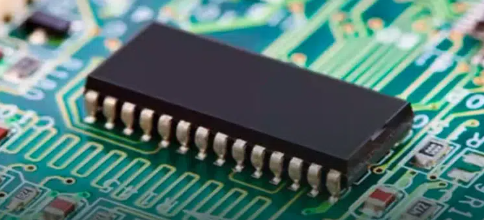What are AI chips What types of mainstream AI chips are there
AI chips are not equivalent to GPUs (graphics processing units). Although GPUs can be used to perform some AI computing tasks, AI chips are chips that are specifically designed and optimized for artificial intelligence computing.

First of all, the GPU was originally designed for graphics processing, and its main function is to process images, render graphics, and graphics acceleration. It features massively parallel processing units and a high-bandwidth memory system to meet image processing and computing needs. Since artificial intelligence computing also requires large-scale parallel computing, GPU has played a certain role in the field of AI.
However, compared with traditional general-purpose processors, AI chips have some specific designs and optimizations to better meet the needs of artificial intelligence computing. Here are some key differences between AI chips and GPUs:
1. Architecture design: AI chips are different from GPUs in architecture design. AI chips typically have dedicated hardware accelerators for performing common AI computing tasks, such as matrix operations and neural network operations. These hardware accelerators can provide higher computing performance and energy efficiency to meet the requirements of artificial intelligence computing.
2. Computing optimization: The design of AI chips focuses on optimizing computing-intensive tasks, such as the training and reasoning of deep learning models. They usually use specific instruction sets and hardware structures to accelerate common calculations such as matrix multiplication, convolution operations, and vector operations. Compared with this, the design of GPU focuses more on graphics processing and general computing, and may not be so efficient for some AI computing tasks.
3. Energy efficiency and power consumption: AI chips usually have high energy efficiency and low power consumption to meet the needs of large-scale AI computing and edge devices. They employ several power-saving techniques and optimization strategies to reduce power consumption while maintaining performance. In contrast, GPUs may require more power when handling complex graphics tasks.
4. Customization and flexibility: AI chips are usually designed for specific AI application scenarios and can be customized and developed according to specific computing needs. This custom design can provide better performance and effects, while GPU is a general-purpose processor suitable for a wide range of computing tasks.
What types of mainstream AI chips are there?
1. Graphics Processing Unit (GPU): GPU was originally designed for graphics processing, but due to its highly parallel computing capabilities, it is gradually being used to accelerate AI computing tasks. NVIDIA’s GPUs are widely used in the field of AI computing, such as NVIDIA Tesla series and GeForce series.
2. Application-Specific Integrated Circuit (ASIC): ASIC is a specially customized chip optimized for a specific application. In the field of AI, ASIC chips, such as Google’s Tensor Processing Unit (TPU) and Bitmain’s ASIC chips, have efficient AI computing capabilities.
3. Field-Programmable Gate Array (FPGA): FPGA is a reconfigurable hardware platform that allows users to customize programming according to specific needs. In AI computing, FPGA can be optimized according to different neural network architectures, with flexibility and scalability.
4. Neural Processing Unit (NPU): NPU is a chip specially designed for neural network computing tasks. They usually have a highly parallel structure and specialized instruction sets to accelerate the training and inference of neural network models. Huawei’s Kirin NPU and Asus’ Thinker series chips are common NPUs.
5. Edge AI Chips: Edge AI chips are AI chips specially designed for edge computing devices, such as smartphones, Internet of Things devices, and drones. These chips typically feature low power consumption, high energy efficiency, and small size to suit edge devices. For example, Qualcomm’s Snapdragon series chips integrate AI acceleration.
Leading companies and products of AI chips
1. Huawei
Kirin NPU: Huawei’s Kirin chip series integrates its own NPU to provide efficient AI computing capabilities. These chips are widely used in Huawei’s smartphones and other devices.
2 NVIDIA
GPU products: NVIDIA’s GPU series include GeForce, Quadro and Tesla, among which Tesla series GPUs are widely used in deep learning and AI computing.
Tensor Core: NVIDIA’s Tensor Core is a hardware unit specially designed to accelerate deep learning calculations, integrated in its GPU.
3. Google
Tensor Processing Unit (TPU): The TPU developed by Google is an ASIC chip specially used to accelerate artificial intelligence calculations. TPUs are widely used in Google’s data centers to accelerate machine learning tasks and inference workloads.
4. Intel
Intel Nervana Neural Network Processor (NNP): Intel NNP is an ASIC chip designed for deep learning reasoning. It has a highly parallel architecture and optimized neural network computing power.
5. AMD
Radeon Instinct: AMD’s Radeon Instinct series of GPUs are designed for high-performance computing and deep learning tasks. These GPUs have powerful parallel computing capabilities and support deep learning frameworks and tools.
6. Apple
Apple Neural Engine: Apple has integrated Neural Engine in its A-series chips, which is a hardware accelerator dedicated to speeding up machine learning and AI tasks. It is used to support functions such as face recognition and voice recognition.
在线留言询价

Packaging Chips For Cars
- 一周热料
- 紧缺物料秒杀
| 型号 | 品牌 | 询价 |
|---|---|---|
| TL431ACLPR | Texas Instruments | |
| RB751G-40T2R | ROHM Semiconductor | |
| MC33074DR2G | onsemi | |
| CDZVT2R20B | ROHM Semiconductor | |
| BD71847AMWV-E2 | ROHM Semiconductor |
| 型号 | 品牌 | 抢购 |
|---|---|---|
| IPZ40N04S5L4R8ATMA1 | Infineon Technologies | |
| STM32F429IGT6 | STMicroelectronics | |
| TPS63050YFFR | Texas Instruments | |
| BP3621 | ROHM Semiconductor | |
| ESR03EZPJ151 | ROHM Semiconductor | |
| BU33JA2MNVX-CTL | ROHM Semiconductor |
- 周排行榜
- 月排行榜
AMEYA360公众号二维码
识别二维码,即可关注


请输入下方图片中的验证码:

























